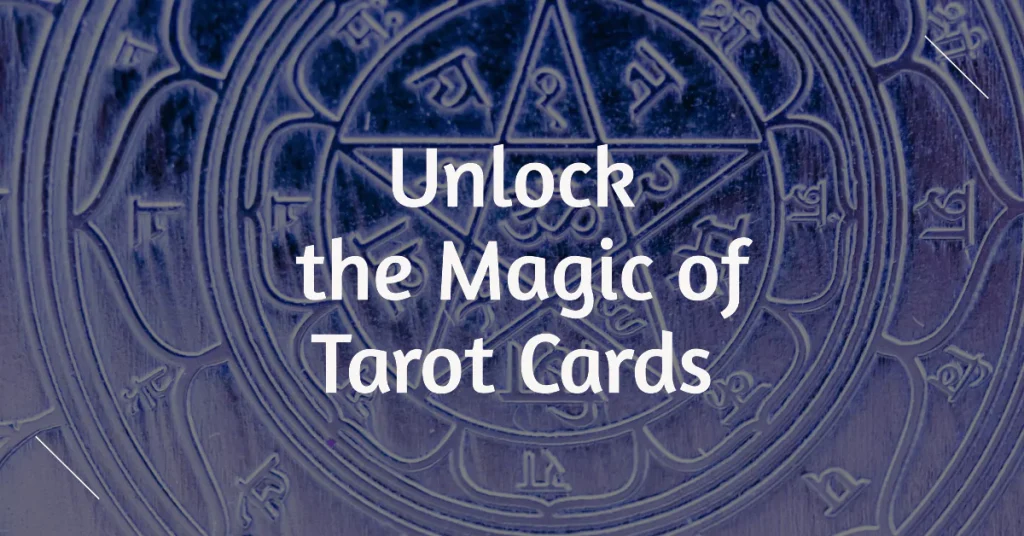This guide is for beginners and covers the history, basic structure, and meanings of tarot cards. The goal is to help you understand tarot cards quickly and easily.
A Brief History of Tarot
The origins of tarot cards are not clear. One theory is that they evolved from playing cards popular in Europe. Later, the Romani people used tarot cards for divination. Before the tarot cards we know today, there were the Visconti-Sforza Tarot, the Marseille Tarot, and other ancient forms.
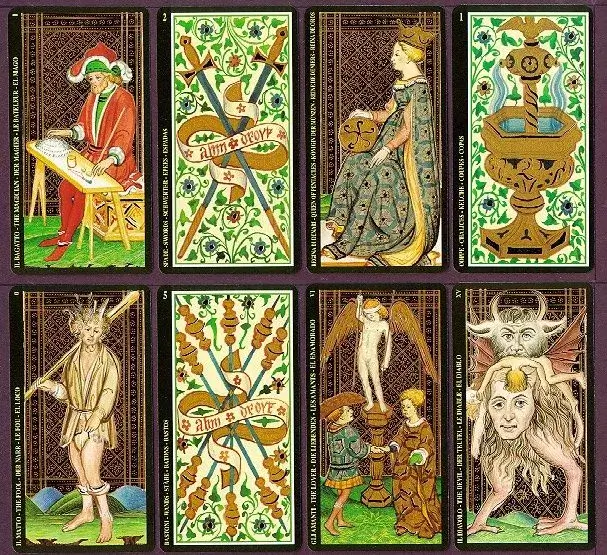
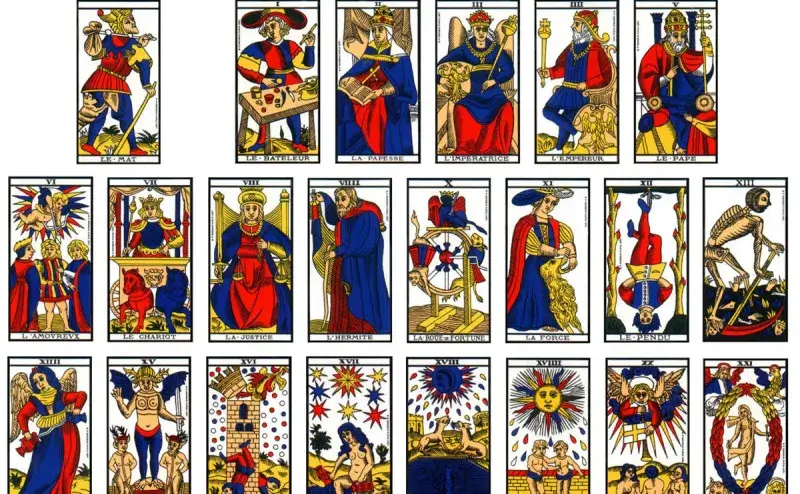
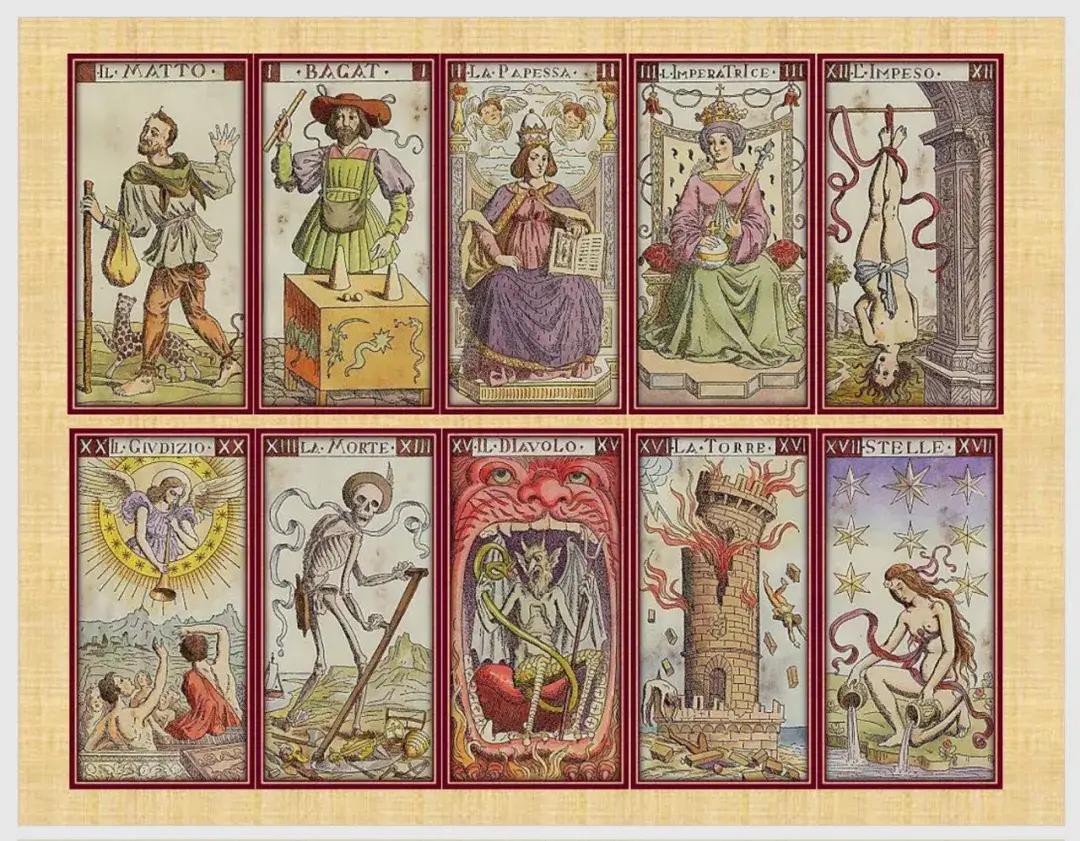
In the 19th century, the British occult society Golden Dawn combined the Marseille Tarot with mysticism. This made tarot cards more meaningful and mysterious.
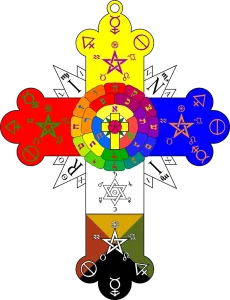
Golden Dawn had two important members: Arthur Edward Waite and Aleister Crowley. Waite worked with artist Pamela Colman Smith to design the Rider-Waite Tarot deck:
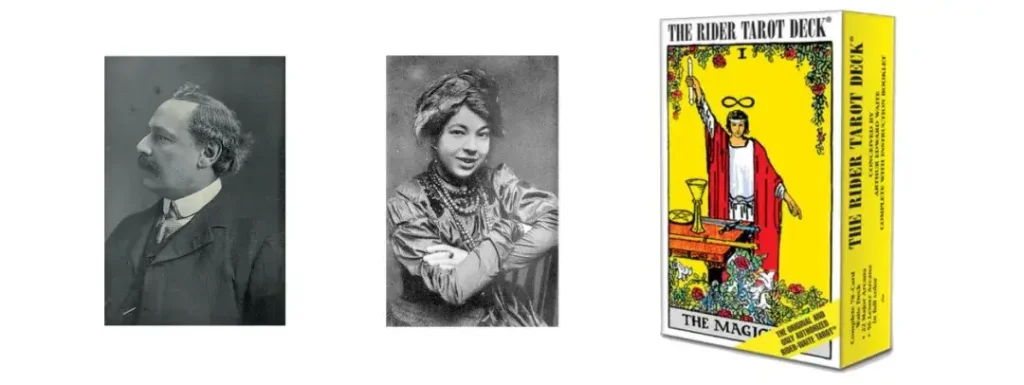
After leaving Golden Dawn, Crowley worked with Lady Frieda Harris to create the Thoth Tarot deck:
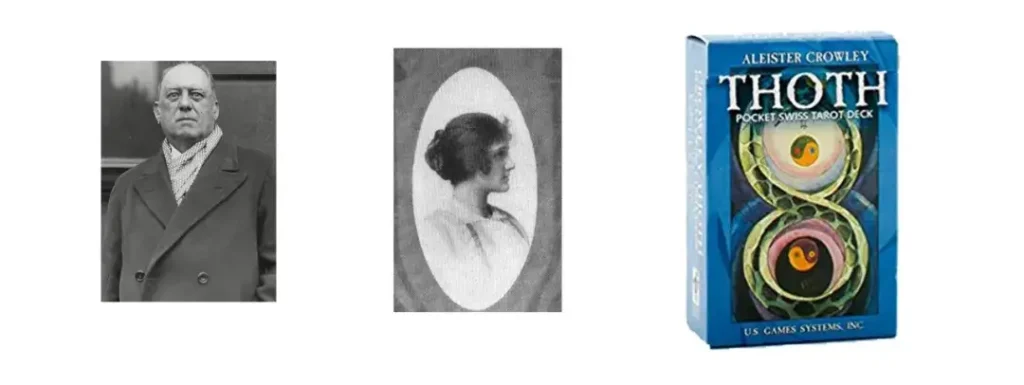
These two decks are the most popular in the world today. The Thoth Tarot is less common but still popular worldwide. Although their systems are different, professional tarot readers usually know both.
Now we will use the Rider-Waite Tarot to explain the structure of tarot cards.
The Structure of Tarot Cards
The 78 tarot cards can be divided into three parts: 22 + 4*10 + 4*4.
- 22 Major Arcana cards
- 40 Minor Arcana numbered cards: Based on the four elements (fire, air, water, earth) and numbered from 1 to 10.
- 16 Minor Arcana court cards: Based on the four elements, each with four court figures.
Major Arcana
The Major Arcana consists of 22 cards, numbered from 0 to 21. These cards represent the spiritual aspects of life, such as internal changes or uncontrollable parts of destiny. They can significantly impact one’s beliefs and values. The Major Arcana tells the story of the Fool’s spiritual journey.
- First Stage of the Fool’s Journey
- The journey starts with the Fool (card 0) and ends with the World (card 21). It symbolizes the Fool’s life journey, completing a perfect cycle.
- Second Stage of the Fool’s Journey
- Arrange the cards from 1 to 10 and 11 to 20 in two rows. Think about the connections between the cards in the upper and lower rows.
- Third Stage of the Fool’s Journey
- Arrange the 1 to 21 cards in three columns of seven cards each. This arrangement reveals more complex relationships among the cards. The first column represents the conscious (body), the second column the subconscious (mind), and the third column the superconscious (spirit).
Tip: Occasionally lay out the Major Arcana in two or three rows and study the relationships between multiple cards. The more you observe, the deeper your insights and understanding will be.
The Fool’s Journey helps memorize the order of the Major Arcana, but unlike the precise order of the numbered Minor Arcana cards, the order of the Major Arcana can vary between different tarot systems. For example, cards 8 and 11 might be switched, and the Fool (card 0) might appear before card 21 in some systems.
Minor Arcana
While the Major Arcana represents significant spiritual themes, the Minor Arcana numbered cards reflect more detailed events. These are situations that individuals can control and usually do not have long-lasting impacts.
Understanding the Minor Arcana requires two concepts: elements, numbers, and courts. These are the core of the Minor Arcana. The Minor Arcana includes four suits: Wands, Cups, Swords, and Pentacles. Each suit has 10 numbered cards and 4 court cards. Numbered cards represent 10 aspects of daily life, and court cards represent people, personalities, and sometimes events.
Elements
The four elements are a classic theory in Western philosophy: fire, air, water, and earth. This theory is the foundation of alchemy and later became the basis of modern chemistry. Although modern science has distanced itself from ancient alchemy and mysticism, this basic philosophical view has persisted.
- Wands (Fire Element)
- Associated with action and creation.
- Represents initiative, energy, passion, desire, intuition, positivity, creativity, optimism, adventure, and enterprise.
- Wands people act on intuition and instincts, are bold and active, but can seem impulsive and self-centered, sometimes with short-lived enthusiasm.
- Cups (Water Element)
- Associated with intuition and emotions.
- Represents love, emotions, relationships, feelings, sensitivity, compassion, harmony, empathy, friendship, introspection, dreams, and illusions.
- Cups people act on emotions and intuition, care for others, value relationships, but can be overly sentimental and emotional.
- Swords (Air Element)
- Associated with conflict and challenges.
- Represents trouble, sadness, anger, negative emotions, thinking, intellect, intelligence, and wisdom.
- Swords people are rational, have precise judgment, strong organizational skills, remain calm in situations, but can seem cold and unemotional.
- Pentacles (Earth Element)
- Associated with material and pleasure.
- Represents money, nature, stability, security, health, family, heritage, daily life, work, transactions, and enjoyment.
- Pentacles people value material life, work hard, and enjoy life, but can be greedy and stubborn.
The connection of the four elements to the objects Wands, Swords, Cups, and Pentacles relates to the history and symbolism of Western mysticism and art.
Numbers
The numbers in tarot have mystical meanings. Each number corresponds to a specific concept or state. The numbers 1 to 10 represent a decimal philosophy, where each cycle completes at 10 and begins anew (similar to the binary philosophy of yin and yang in Chinese thought).
The Meaning of the Ten Numbers
From 1 to 10, the cards represent a complete developmental process:
- Beginnings and Foundations
- Development and Opposition
- Initial Success of 1 and 2
- Stability and Order
- Conflict and Instability
- Recovery and Compromise
- New Beginnings and Struggle
- Reevaluation and Continued Action
- Final Achievement and Sacrifice
- Completion and Transformation
After reaching 10, the cycle returns to 1, starting a new phase. Combining the four elements with these numbers gives each numbered card its specific meaning.
Combining these two concepts, we get all the Minor Arcana numbered cards:
1 – Beginnings and Origins
- Wands 1: The start of action and creativity.
- Cups 1: The beginning of relationships and intuition.
- Swords 1: The start of mental activity and challenges.
- Pentacles 1: The beginning of materializing ideas.
Each “1” card presents a new opportunity, like a seed that needs to be discerned as good or bad.
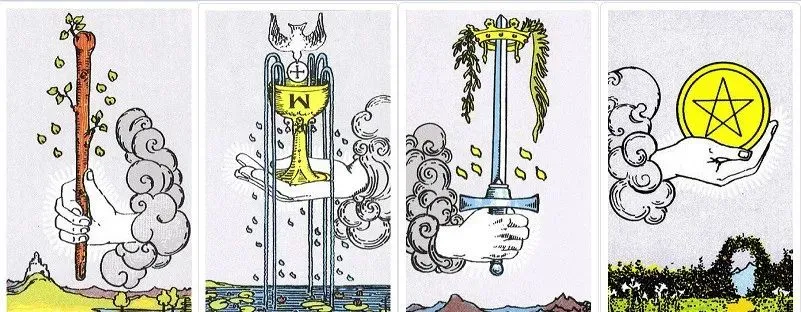
2 – Union and Opposition
- Wands 2: Considering two choices.
- Cups 2: The union of relationships.
- Swords 2: The standoff between two forces.
- Pentacles 2: The balance between two forces.
Each “2” card involves two forces. If well combined, they can create synergy; if not, they cause opposition and stagnation.
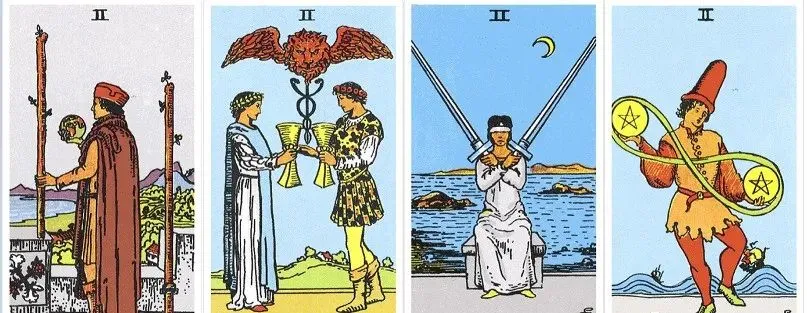
3 – Cooperation and Initial Success
- Wands 3: Cooperation and initial success in trade.
- Cups 3: Cooperation and initial success in relationships.
- Swords 3: Initial impact of harm.
- Pentacles 3: Cooperation and initial success at work.
Each “3” card represents the initial success of its suit. Trade sets sail, relationships harmonize, work progresses smoothly, and swords cause initial pain.
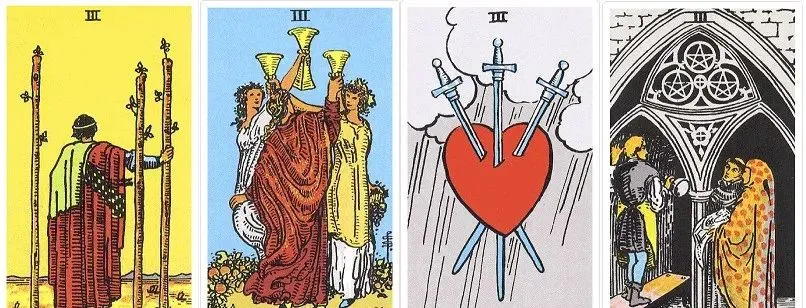
4 – Stability and Order
- Wands 4: Celebration after achieving stability in business.
- Cups 4: Emotional withdrawal into contemplation.
- Swords 4: Finding shelter and stability amidst chaos.
- Pentacles 4: Financial stability.
Each “4” card maintains stability after the initial success of “3,” but can lead to a sense of confinement and dissatisfaction.
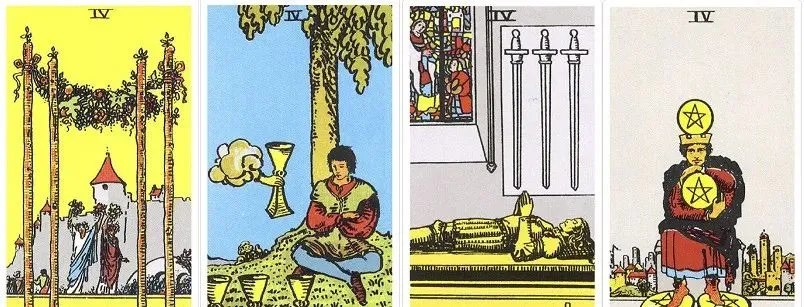
5 – Conflict and Loss
- Wands 5: Conflict in actions.
- Cups 5: Emotional loss.
- Swords 5: Conflict causing harm.
- Pentacles 5: Financial loss.
The stability of “4” breaks down into conflict in “5.”
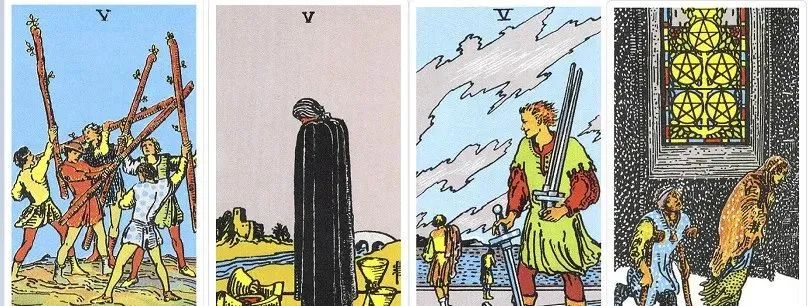
6 – Sharing and Compromise
- Wands 6: Sharing glory.
- Cups 6: Emotional gifts.
- Swords 6: Gradual recovery from harm.
- Pentacles 6: Generously sharing money.
“6” cards can lead to extremes, turning success into pride and gifts into charity.
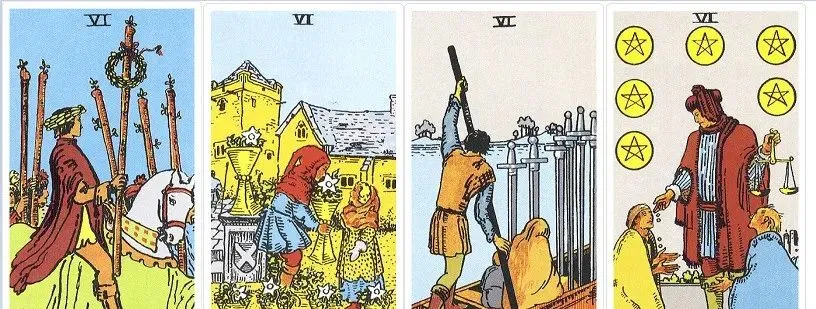
7 – Introspection and Struggle
- Wands 7: Fighting for victory.
- Cups 7: Introspection through dreams.
- Swords 7: Struggling through difficulties.
- Pentacles 7: Introspection after initial success.
Introspection and struggle aim to overcome obstacles. Cups and Pentacles look inward, while Wands and Swords fight externally.
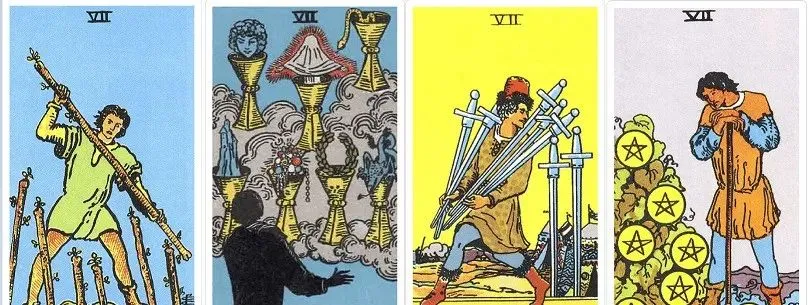
8 – Reevaluation and Action
- Wands 8: Swift action.
- Cups 8: Reevaluation of emotions leading to action.
- Swords 8: Facing restrictions and reevaluating to escape.
- Pentacles 8: Diligent work.
Cups and Swords face difficulty in decisiveness, while Wands and Pentacles struggle with endless action without resolution.
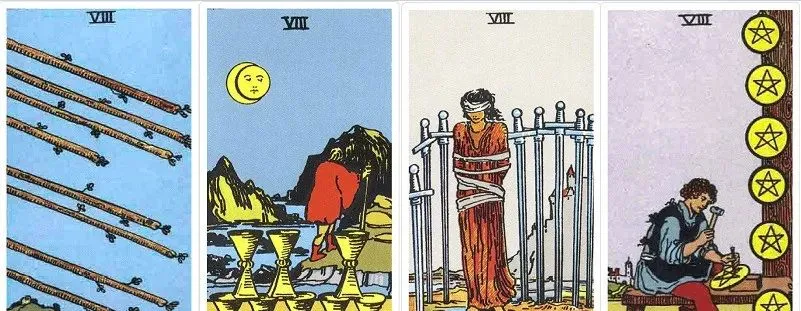
9 – Achievement and Solitude
- Wands 9: Facing challenges alone.
- Cups 9: Enjoying emotional fulfillment alone.
- Swords 9: Suffering pain alone.
- Pentacles 9: Enjoying wealth alone.
“9” cards achieve fullness but often lead to solitude.
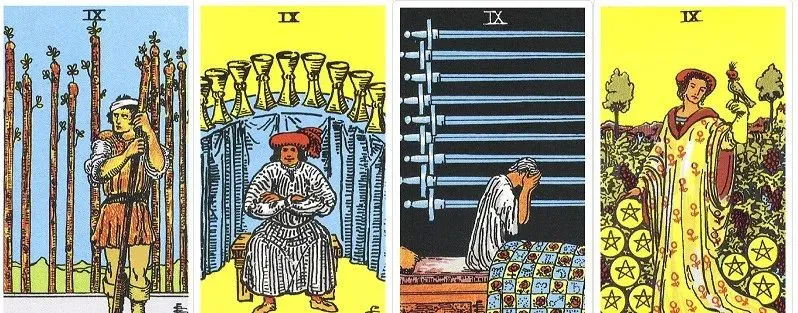
10 – Completion and Transformation
- Wands 10: Burdened by actions, needing to let go and transform.
- Cups 10: Emotional and relational fulfillment.
- Swords 10: Final harm turning into hope.
- Pentacles 10: Complete material success, but hinting at the need for transformation due to overindulgence.
“10” cards signify potential crises from excess.
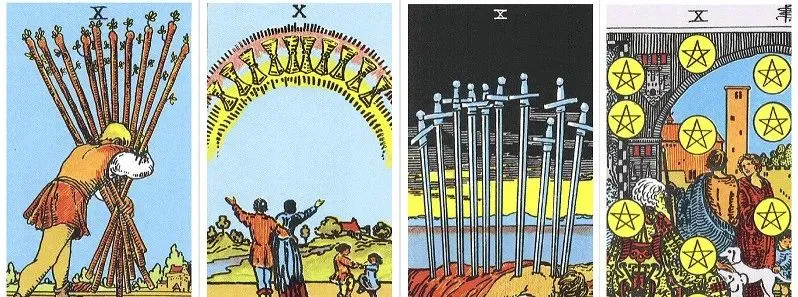
Court Cards
The court cards in Tarot, also known as the people cards, are based on the four elements. Each element is divided into Page, Knight, Queen, and King, making a total of 16 cards.
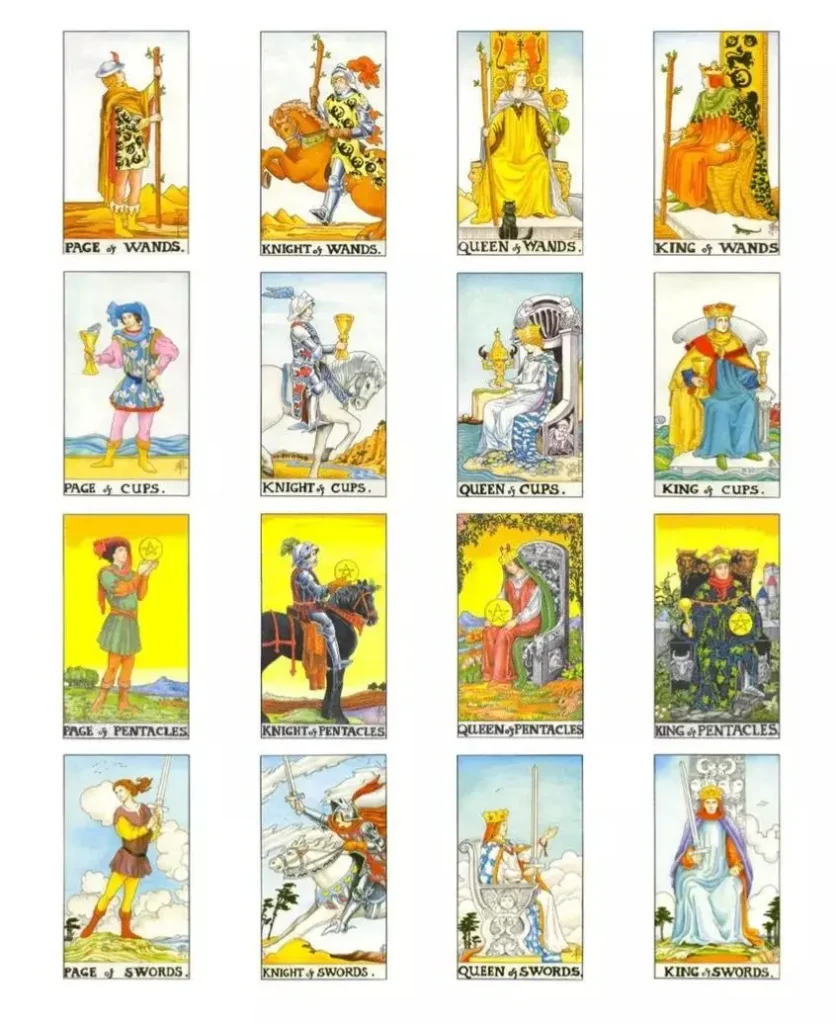
The interpretation of court cards has two aspects. The first aspect corresponds to personality traits, and the second aspect represents the development of situations in a certain state. Both aspects can be understood using the element + element approach.
- Page: Fire element
- Knight: Air element
- Queen: Water element
- King: Earth element
For example, the Page of Wands combines the fire element of the Wands suit with the fire element of the Page. This double fire element intensifies the traits of fire—explosiveness and impulsiveness. A person with this personality acts on impulse and often makes hasty decisions. Using this element + element logic, we can deduce the meaning of each court card.
It is worth mentioning that the elements corresponding to these roles vary in different systems. Some systems consider Pages as air elements. In the Thoth Tarot, Pages are called Princesses and correspond to the earth element, while Knights correspond to the fire element.
When studying in-depth, be aware of which system you are learning and its element associations.
Additionally, court cards can correspond to zodiac signs. Kings correspond to fixed signs, Queens to cardinal signs, and Knights to mutable signs. This allows us to understand court cards from an astrological perspective.
While astrological correspondences are not essential for learning the Rider-Waite Tarot, they can enhance our understanding.
Wrapping Up
This article introduces the structure and basic meanings of the 78 cards in the Rider-Waite Tarot deck. Stay tuned for future articles where we’ll explore card interpretations, divination techniques, and reading methods. Don’t miss out!
